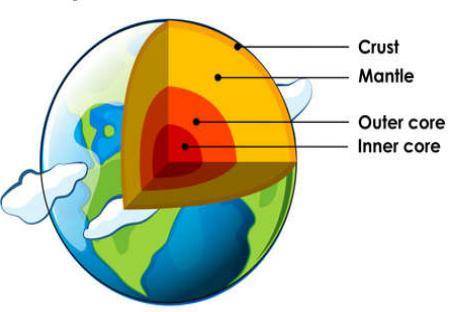1. two students below described a type of earth's outermost layer:
student a: 5–12 kil...

Chemistry, 29.09.2019 22:50 serenityarts123
1. two students below described a type of earth's outermost layer:
student a: 5–12 kilometers deep
student b: makes up the sea floor
which type of outermost layer did the students describe?
they both described the oceanic type.
they both described the continental type.
student a described the oceanic type and student b described the continental type.
student a described the continental type and student b described the oceanic type.
question 2
the temperature and the pressure on earth's inner core force it to remain a solid.
high, low
low, high
low, low
high, high
question 3
scientists have discovered convection currents inside earth. explain how these convection currents move and what layer(s) they occur in.

Answers: 2


Other questions on the subject: Chemistry


Chemistry, 22.06.2019 09:00, yogibear5806
Look at the spectrums of a star moving towards earth and a motionless star. which of these is a correct inference that can be draw from the observation of the two spectrums? (2 points) the spectrum of a motionless star is difficult to be viewed separately using oridinary telescopes. the spectrum of a motionless star is identical to the spectrum of a star which moves towards earth. the spectrum of a star shifts towards the red region when the star moves towards earth. the spectrum of a star shifts towards the blue region when the star moves towards earth.
Answers: 2

Chemistry, 22.06.2019 13:10, Jana1517
The last few miles of the marathon are the most difficult for heather, her hair plastered to her head, sweat clinging to her arms, and her legs already feeling as if they had nothing left, just dead weight. after grabbing a cup of ice water, she feels the ice cubes smash against her nose as she gulps some cool refreshment and keeps on running. in these last few miles, the breeze kicks up and she finally feels some coolness against her skin. drips of sweat, once clinging to her forehead, now spill down, and heather feels more pain as the sweat flows into her eyes. which of the following is the most likely reason why the ice struck heather’s nose when she took a drink? a) water can function as a solvent. b) water can store large amounts of heat. c) water can moderate temperatures through evaporative cooling. d) the density of water decreases when it freezes. e) water has a cohesive nature. sweat remained on heather’s forehead and arms because of the a) high salt content of sweat b) cohesive nature of water c) ability of water to moderate heat d) high evaporative cooling effect of water e) ability of water to act as a solvent
Answers: 1

Chemistry, 22.06.2019 14:30, villarrealc1987
In water, a strong acid will break down into its component parts. a. completely b. partly c. never in water, a weak base will break down into its component parts. a. completely b. partly c. never
Answers: 2
You know the right answer?
Questions in other subjects:






English, 30.06.2019 09:30



Social Studies, 30.06.2019 09:30





